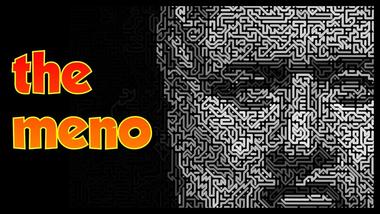
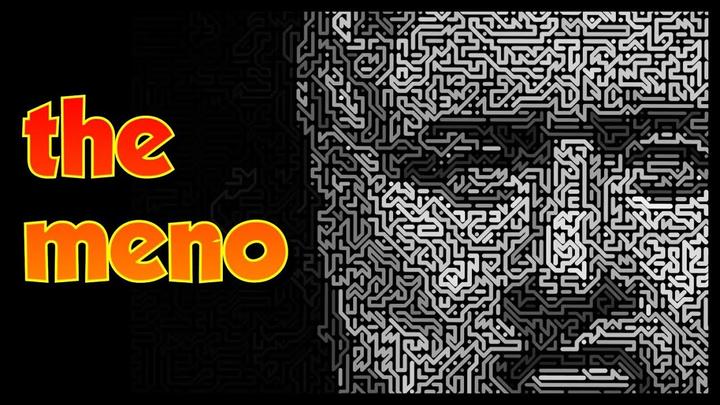
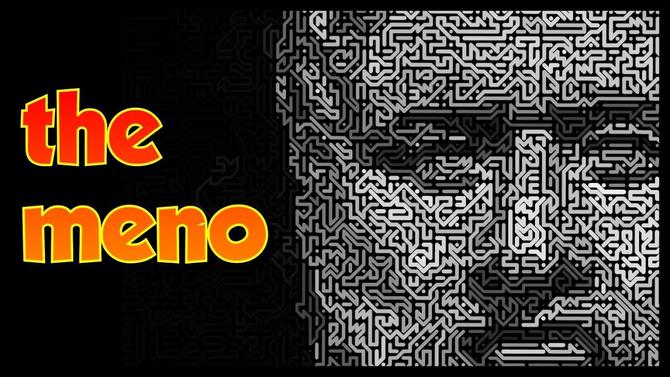
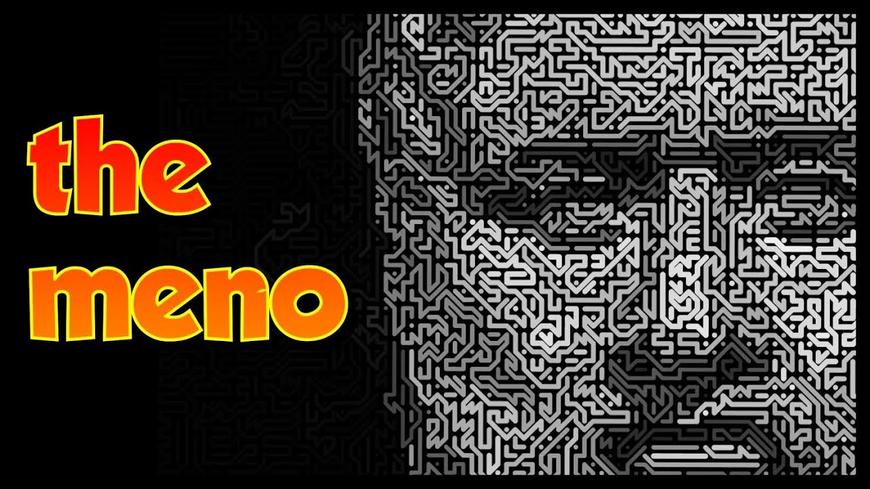
The prominent Plato’s teaching on recollection was first set out in the dialogue “Meno”. Here, it is demonstrated in a famous experiment with a boy who learned geometry in a dialogue with Socrates. The result of this dialogue points to Plato's theory of the knowledge of the world of ideas. Thus, considering the Platonic doctrine of recollection, one finds the formulation and partial solution of the question of the relation of knowledge and being. Once synthesis is possible between knowledge and being, and knowledge and being somehow should be transformed in the light of this synthesis. On an example of a geometric problem, one can see how knowledge is modified under the action of such a synthesis and it is treated as a recollection. Thus, Plato, on the example of unleashing a geometrical problem, proves that the soul’s recollection of the world of ideas makes the learning of a person merely a recollection of what is already known.
Here follows the famous place, which is so characteristic of Plato: he brings to the main conclusion of his dialogue with the help of a geometric proof, to the understanding of which he gradually leads a slave boy who never studied geometry (Bedu-Addo 1). With the help of simple and clear questions of Socrates, this boy, though not learning, but well aware at the same time that such a square figure, recognizes that with the two-foot side of the square, the square of this square is four-foot (Plato 73). When Socrates proposes to the boy to calculate the side of the doubled square, the boy mistakenly thinks that the side of such a doubled square will also be doubled; will be equal to four feet. This error the boy recognizes, realizing that the square with sides equal to four feet, would be equal not to eight, but to the whole sixteen feet (Plato 76). It does not help the case, as the boy himself has to admit further and the two-foot side up to three feet increase because the square of the square with the three-foot sides would be eight and nine-foot. Finally, Socrates holds a diagonal in a square with an area of four feet and, having constructed on this diagonal a new square consisting of four triangular parts of the original square with an area of four feet, brings the boy to the awareness that the side of the square with an area of eight feet should not be four feet and not three feet, but equal to the size of the square diagonal with an area of four feet, which is more than two feet, but less than three feet (Plato 76). Since no one taught geometry to the boy, and yet, with the help of leading questions of Socrates, he comes to an exact geometrical truth, Socrates concludes from this that the geometric truths and in general all true knowledge the boy had before birth, that he had seen before birth exactly, it is clear and not subject to any changes that the soul who has seen these truths before birth is immortal and that the question-and-answer method is a real path from ignorance to knowledge (Plato 78). Since knowledge is what people are trained, virtue is also educational and knowledge of virtue can be known to every soul (Bedu-Addo 7).
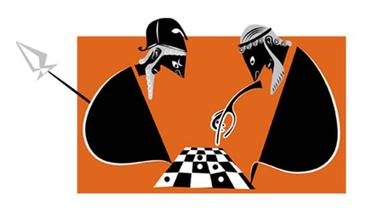
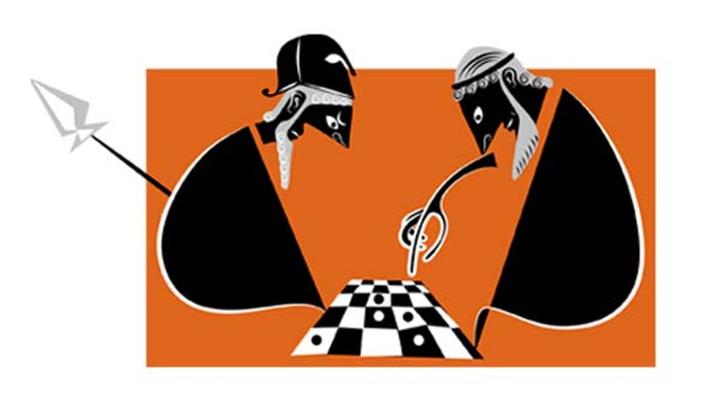
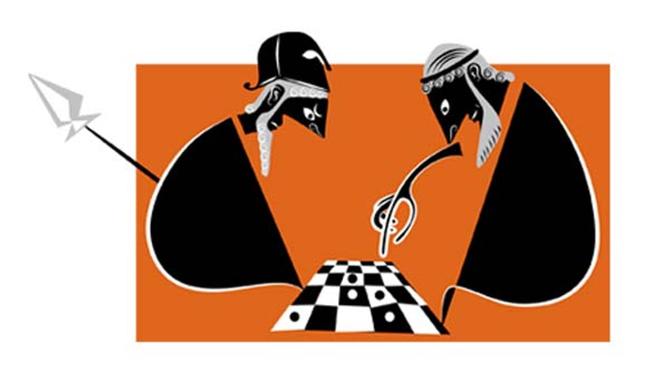
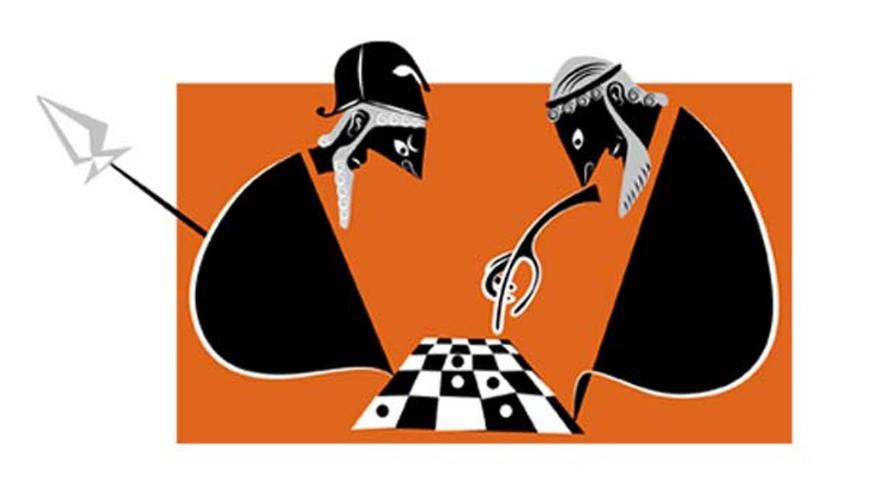
It is necessary to correctly understand the very term recollection, which is used here by Plato in connection with ontological ideas. Thus, describing the stages of recollecting the slave and his progress, Plato points to recalls as the basis for the Socratic search for definitions (Bedu-Addo 3). The Platonic concept of recollection and the related concept of the other world, the immortality of the soul, once contemplating eternal ideas, and now in the earth's shell only vaguely reminding of them, all this is nothing more than explicit mythology. Since, however, a great logical work has been done here and the other world is already thought of as a system of generic communities, which reasonably and expediently determine the flow of material reality, there remains little from the old naive mythology. Therefore, platonic objective idealism is traced here, revealing mythology from the point of view of logical consideration.
Thus, the doctrine of knowledge as a recollection in the “Meno” carries all the features of a purposely pure and logical transcendentalism, and Plato himself often stresses this. He writes that if we regard the soul as immortal, then when we are born often and accumulates the experience of life and the underworld, recollecting the virtue and all those things that the soul knew before is an obvious process (Plato 71). Therefore, rejecting all previous partial approaches to virtue, Socrates gives the following definition: the soul is immortal, the soul before its earthly life contemplated the truth, and now, in its earthly life, recalling what it has seen, it can understand all the partial and fragmented, including the virtue. With the help of leading questions, Socrates demonstrates that the slave knows geometry, although he did not study it. Thus, he recalls what he knew in a past life and with the help of a recollection, he unravels a puzzle piece, about which he did not know anything. Plato justifies the concept of the individual soul as a self-identical eidos; a soul that has a divine origin, therefore, it is immortal and eager for eternal being in further incarnations. Thus, the doctrine of recollection is the idea of the connection of all knowledge reflecting the universal connection of all things.
Have your paper written from scratch with Writing Endeavour and be sure to receive a high grade!